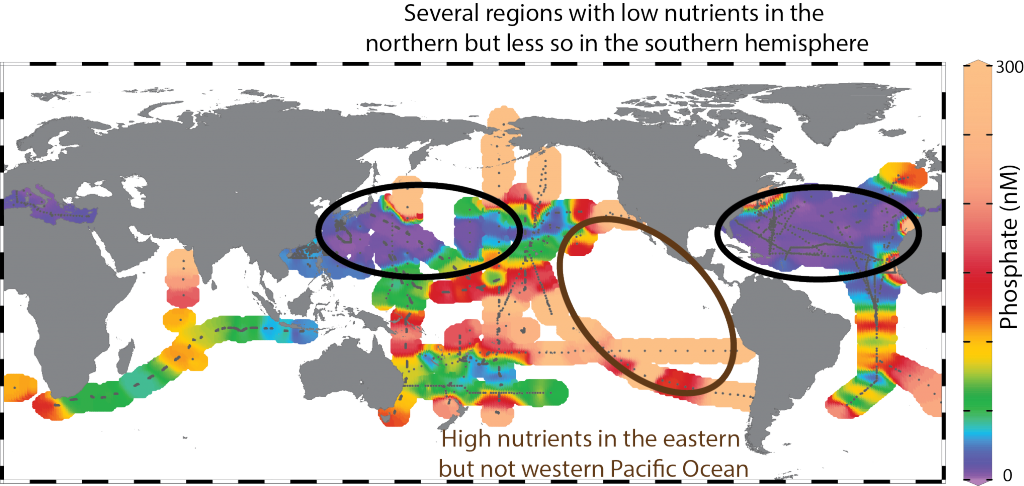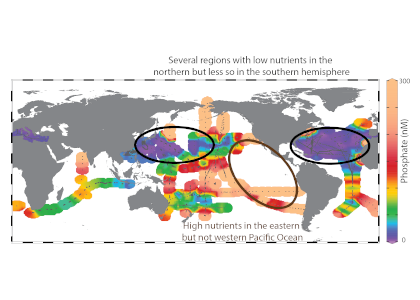Phosphorus availability is important for phytoplankton growth and more broadly ocean biogeochemical cycles. However, phosphate concentration is often below the analytical detection limit of the standard auto-analyzer technique. Thus, we know little about geographic phosphate variation across most low latitude regions. To address this issue, a global collaboration of scientists conducted a study published in Science Advances on combined phosphate measurements using high-sensitivity methods that yielded a detailed map of surface phosphate (Figure 1).

Figure 1: Fine-scale global variation of surface phosphate. Surface phosphate measured using high-sensitivity techniques revealed previously unrecognized low latitude differences in phosphate drawdown.
The study’s new globally expansive phosphate data set revealed previously unrecognized low-phosphate areas, including large regions of the Pacific Ocean—really low phosphate in the western North Pacific and to a lesser extent in the South Pacific. Although atmospheric iron input and nitrogen fixation are commonly described as regulators of surface phosphate, this study shows that shifts in the elemental stoichiometry (N:P:Fe) of the vertical nutrient supply play an additional role. Previous studies and climate models have suggested that the availability of phosphate is a first-order driver of ocean biogeochemical changes. Interestingly, this study suggests that marine ecosystems are more resilient to phosphate stress than previously thought. These findings underscore the importance of accurately quantifying nutrients at low concentrations for understanding the regulation of ocean ecosystem processes and biogeochemistry now and under future climate conditions.
And the data are of course available in BCO-DMO!
Authors:
Adam C. Martiny (University of California, Irvine)
Michael W. Lomas (Bigelow Laboratory for Ocean Sciences)
Weiwei Fu (University of California, Irvine)
Philip W. Boyd (University of Tasmania)
Yuh-ling L. Chen (National Sun Yat-sen University)
Gregory A. Cutter (Old Dominion University)
Michael J. Ellwood (Australian National University)
Ken Furuya (The University of Tokyo)
Fuminori Hashihama (Tokyo University of Marine Science and Technology)
Jota Kanda (Tokyo University of Marine Science and Technology)
David M. Karl (University of Hawaii)
Taketoshi Kodama (Japan Fisheries Research and Education Agency)
Qian P. Li (Chinese Academy of Sciences)
Jian Ma (Xiamen University)
Thierry Moutin (Université de Toulon)
E. Malcolm S. Woodward (Plymouth Marine Laboratory)
J. Keith Moore (University of California, Irvine)





